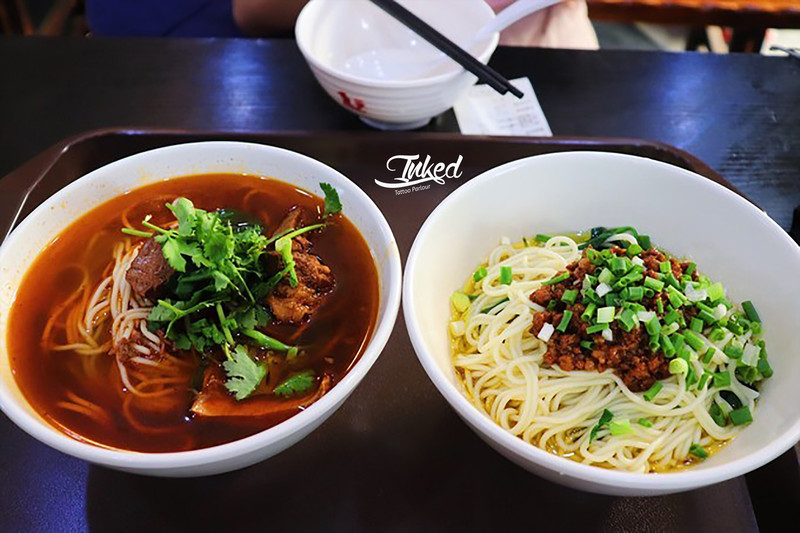请问知道哪些关于思念家乡、或有关于家乡的英文歌曲吗??
很有名的乡村音乐 country road ,好听也容易学。
希望对你有帮助。
说说你家乡的特色有哪些?
一:延边大米
主要出产于吉林省延边朝鲜族自治州。该州有悠久的水稻种植历史,是我国北方著名的水稻主产区。延边大米品质优良,食味上佳,其粒形整齐、色泽莹白、透明度强、软硬适中、粘性适度,做出的米饭油润可口。2006年,国家质检总局批准对延边大米实施地理标志产品保护。
独特的自然环境和气候孕育了延边丰富的土特产资源,还有各种珍贵的药材
二:人参
人参又名棒槌,与“貂皮”、“鹿茸角”一起被称为“东北三宝”。人参自古誉为“百草之王”“滋阴补生,扶正固本”之极品,含多种皂甙和多糖类成分,是护肤美容的极品。
人参的肉质根为着名强壮滋补药,适用于调整血压、恢复心脏功能、神经衰弱及身体虚弱等症,也有祛痰、健胃、利尿、兴奋等功效。
三、鹿茸
鹿茸为鹿科动物梅花鹿或马鹿的雄鹿头上尚未骨化的密生绒毛的幼角,以其“得天之精”而成为举世闻名的滋补品,与“人参、貂皮”一同被称为“东北三宝”。
鹿茸主要含有脑素和激素样物质雌酮,另外还含有多种人体所需的氨基酸、蛋白质等多种微量元素。具有生精补髓,益肾助阳等功效。鹿的系列产品鹿角胶、鹿鞭、鹿尾、鹿筋、鹿胎等也同鹿茸一样具有重要的药用价值,在国内外药材市场占有一席之地。
寻找一篇关于中国歌曲的鉴赏(要英文的)
Analysis of prairie folk songs
Mongolian Traditional Folk Long Song 长调
Throughout their long history, the Mongolian people have created their own brilliant civilization and unique culture. The nomadic peoples of Mongolia have their own traditional music, the Long Song. The Long Song represents the life of the nomad in the grasslands of Mongolia. It is a witness to this specific cultural group; wherever there is grassland and the nomads, there is the Long Song. The music is loud and sonorous in order to communicate its messages of the lifestyle led by nomads to those spread throughout the plains. 在悠久的历史长河中,蒙古族创造了自己辉煌的文明,尤以游牧文化最为灿烂。而蒙古长调民歌可称为游牧文化的一朵永不凋谢的花朵。长调与草原、与蒙古民族游牧生活方式息息相关,承载着蒙古民族的历史,哪里有草原,哪里有牧人,哪里就有长调。长调高亢悠远的风格宜于叙事,又长于抒情,是蒙古民族生产生活和精神性格的标志性展示。
The Long Song generally prevails in Inner Mongolia Autonomous Region of PRC and the People's Republic of Mongolia. In November of 2005, the traditional Mongolian Long Song, which represents both Mongolia and China, has been listed as a masterpiece of the Oral and Intangible Heritage of Humanity by the UNESCO. 蒙古族长调民歌也是一种跨境分布的文化,中国的内蒙古自治区和蒙古人民共和国是蒙古族长调民歌最主要的文化分布区。中国和蒙古国联合申报的“蒙古族长调民歌”,已于2005年11月被联合国教科文组织批准列为“人类口头和非物质文化遗产”。
Mongolian Traditional Folk Short Song 短调
The Mongolians have another type of folk song which is referred to as the Short Song. Unlike the Long Song, it is generally written in rhyming couplets with a set rhythm and simple lyrics. The Short Song often employs repetition in its lyrics. It is mainly popular in the half-rural and half-pastoral areas where the Han people and the Mongolian people live together. In addition, it often uses improvisation in songs such as Xibe Lama, Honeyed Wine, Twelve Zodiacs of the Elder Brothers Drawing Camels etc. 短调,与长调对比而得名。与长调民歌明显不同的是,短调一般是两行,有韵的两句式或四句式,节拍比较固定。歌词简单,但不呆板,其特点是在音韵上广泛运用叠字。短调民歌主要流行于蒙汉杂居的半农半牧区。往往是即兴歌唱,灵活性很强。流行的有《锡巴喇嘛》、《美酒醇如香蜜》、《拉骆驼的哥哥十二属相》等。
Mongolian Khoomei 麦呼
Khoomei, or "Haolin Chor," is an astounding type of Mongolian music that uses singing in which the vocalist simultaneously sings two voice parts, one high and one low, a unique practice in all of music. 呼麦,又名“浩林·潮尔”,是存在于蒙古族中的一种神奇的唱法,它的神奇之处就在于一个人能同时唱出一高一低的两个声部。
Khoomei in Mongolian means "throat;" thus, it has been named as an art of throat-singing, or "Chor"-a complex tone. By particular vocalizing techniques, one singer utters two simultaneous voice parts, giving rise to a rare harmonic resonance. First, the singer holds his breath and forces the air out of the vocal cords, producing a bass sound. Then, he adjusts the resonance of the air in the mouth to intensify and centralize the overtone. The effect is the uttering of a high, bright and clear sound with a hint of metal. A Khoomei master can sing the slow Long Song, rapid allegretto as well as world-famous musical pieces with his two voice parts. “呼麦”的蒙古语原意是“喉”,所以呼麦可称作一种喉音演唱艺术,它是蒙古族复音唱法“潮尔”的高超演唱形式。它运用特殊的声音技巧,一人同时唱出两个声部,形成罕见的多声部形态。演唱者运用闭气技巧,使气息猛烈冲击声带,发出粗壮的气泡音,形成低音声部。在此基础上,巧妙调节口腔共鸣,强化和集中泛音,唱出透明清亮、带有金属声的高音声部,获得无比美妙的声音效果。技术高超的“呼麦”演唱大师可以用二声部来演唱徐缓的长调,急速的快板和世界的名曲。
The origin of Khoomei comes from a strange story among the Mongolian people. Ancient people moved about in remote mountains, seeing rivers and waterfalls rushing down from the mountains producing resonation which echoed for miles. The Khoomei is simply the imitation of these sounds. Khoomei is still popular among the Mongolians living in the Altai mountain areas, Xinjiang. 有关呼麦的产生,蒙古人有一奇特说法:古代先民在深山中活动,见河汊分流,瀑布飞泻,山鸣谷应,动人心魄,声闻数十里,便加以模仿,遂产生了呼麦。新疆阿尔泰山区的蒙古人中,至今尚有呼麦流传。
There are few categories of Khoomei, limited by its difficult singing techniques. The first basic category is the singing of the beauty of nature, such as Ode to Altai and Running Water of the Ebu River. The second, mimicking the lovely manners of wild animals, such as Cuckoo and Black Bear, still to this day uses the music played during the hunting age. The third category is songs praising fine horses and grassland, like The Hailiu Horse Aged Four. 呼麦的曲目,因受特殊演唱技巧的限制,不是特别丰富。大体说来有以下三种类型:一是咏唱美丽的自然风光,诸如《阿尔泰山颂》、《额布河流水》之类;二是表现和模拟野生动物的可爱形象,如《布谷鸟》、《黑走熊》之类,保留着山林狩猎文化时期的音乐遗存;三是赞美骏马和草原,如《四岁的海骝马》等。
Khoomei generally sing short-tune songs; however, may also perform a few long-tune songs. Judging from the story about its origin and the lyrical content, the throat-singing is believed to be an outcome of the hunting culture of the Mongolians. 从其音乐风格来说,呼麦以短调音乐为主,但也能演唱些简短的长调歌曲,此类曲目并不多。从呼麦产生的传说,以及曲目的题材内容来看,“喉音”这一演唱形式,当是蒙古山林狩猎文化时期的产物。
Reputed as "a sound of nature" by the musicians, the Mongolian Khoomei indeed is a unique skill. In recent years, it has been mastered by more and more Mongolian musicians. Now, Khoomei has been listed as a masterpiece of the Intangible Heritage of China by the Ministry of Culture. 被音乐界誉为“天籁之音”的蒙古族呼麦唱法堪称“绝技”,近年来,经挖掘整理,为越来越多的内蒙古艺人所掌握。呼麦已被中国文化部列入全国非物质文化遗产推荐项目名录。
Source: China Intercontinental Press
在家乡有什么独特的民间音乐艺术吗?请简要介绍。。
我不知道你哪里人。我是闽南人。我们这边 就有。比如南音。南音也称“弦管”、“泉州南音”,是中国现存最古老的乐种之一。两汉、晋、唐、两宋等朝代中原移民把音乐文化带入以泉州为中心的闽南地区,并与当地民间音乐 融合,形成了具有中原古乐遗韵的文化表现形式--南音。
陕西有哪些传统的、特色的音乐文化?
陕西地处我国西北,曾经孕育过繁荣的西周文化和大唐文明。陕西 传统音乐文化流传比较久远的就属秦腔了。再就是最近比较火的华阴老腔,因为谭维维的演绎,上了去年的春晚。接下来比较著名的就是皮影戏了,也有说法华阴老腔是皮影戏的一个分支。歌舞类就是陕西秧歌,安塞腰鼓等等。再就是大家耳熟能详的陕北民歌了。在几千年的发展过程中,从它还分化出以打击乐配器为主的“碗碗腔”。以弦乐配器为主的“迷糊戏”。以及流行于长安一带的吸收了山歌元素的“关中道情”“长安道情”。流行于富平一带的“阿宫腔”。流行于大荔一带的“线腔”等。









